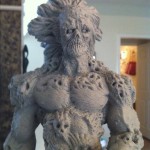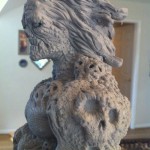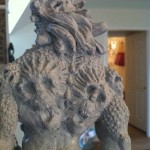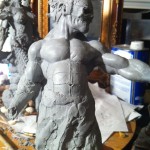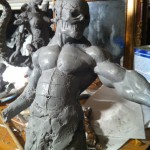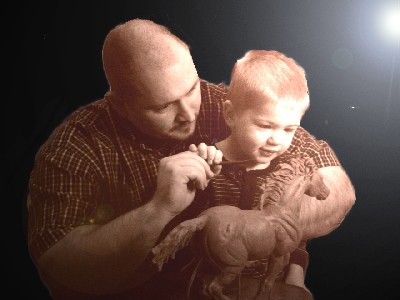
Gerald Gore
My name is Gerald Gore and I would like to personally welcome you to Polymer Clay Fan. The Polymer Clay Fan website is a collection of a few of the sculptures that I have created. Some of the sculptures on this site have been put into production while the majority of them are only here for your viewing pleasure.
My sculpting background
In November 2003 I had a life changing accident, I accidentally discovered sculpting. My wife, Karen, was taking a ceramic painting class and I asked if she would bring home some clay for me to play with. I took art back when I was in high school so I thought it would be neat to try my hand at sculpting. However, the majority of my art experience by that time had been with drawing and painting. My previous sculpting experience included making an ashtray in the fifth grade (which looked like a third grader made it) and an armless torso in high school – hey what can I say, I couldn’t figure out how to make the arms :-).
In all honestly I was scared to death that I would not be able to sculpt. I pretty much sat the box of clay in the corner of the house and hoped that it would figure out how to sculpt itself. After letting the clay sit around the house for a few weeks I finally decided to give sculpting a try. I had a blast! My daughter, who was four at the time, and I made a complete mess in the house but it was worth it (although my wife may disagree). Within three days I created my first sculpture, became hooked and have been sculpting ever since.
I have been fortunate enough to be able to teach myself how to sculpt. I have also found the internet to be a wonderful resource for learning all types of sculpting styles and techniques. In my short journey in this medium I have personally discovered that sculpting is an incredible form of art that teaches me something new every day. Art has always been a rewarding love in my life; it can be relaxing, challenging and stimulating all in the same moment.
I highly recommend that everyone should try to learn some type of craft, whether it be sculpting, painting, drawing or something that you just make up. Over the past few years I have learned that when you share art with the ones that you love it can be a very bonding and rewarding experience. No matter what artistic form you choose to tackle, go out, have fun and broaden you imagination.
All the best,
Gerald Gore
